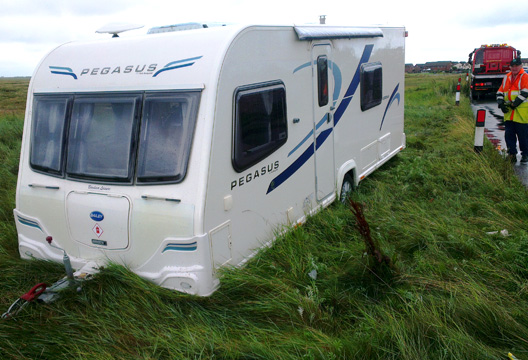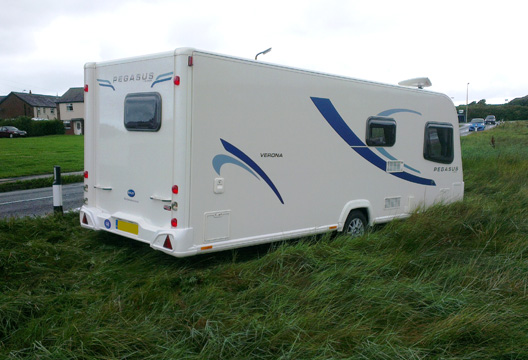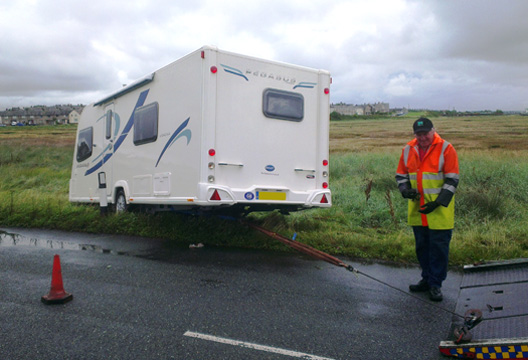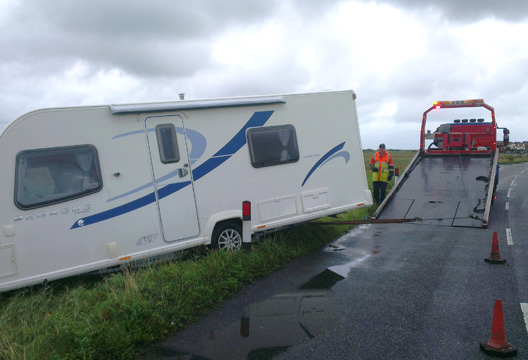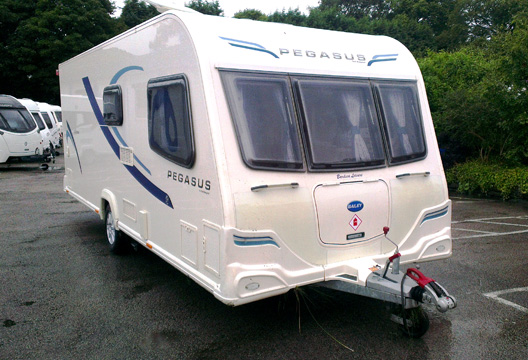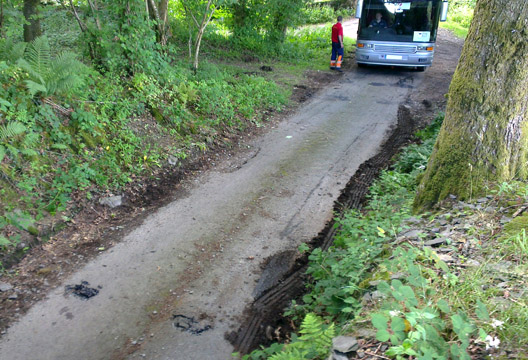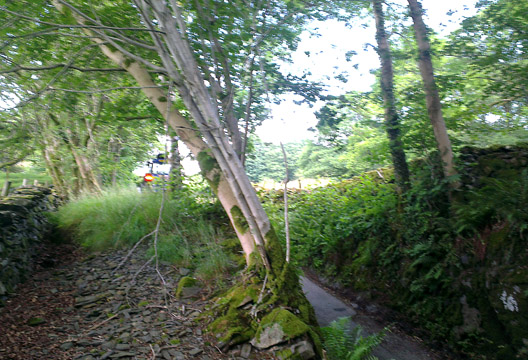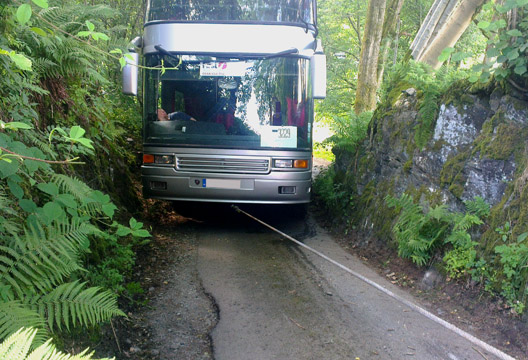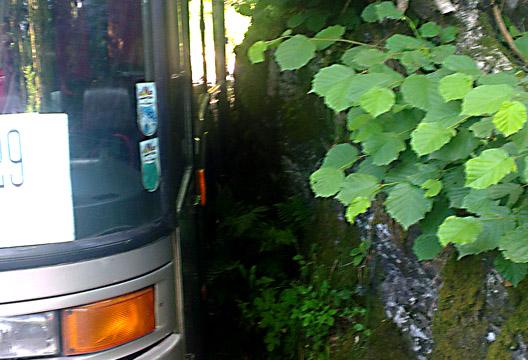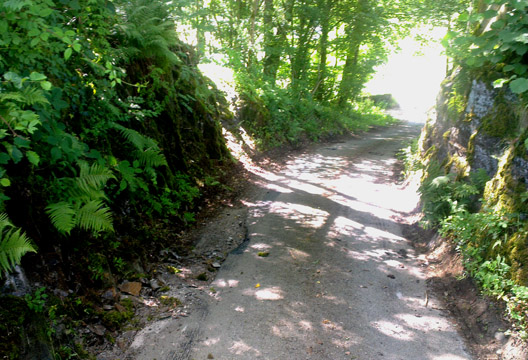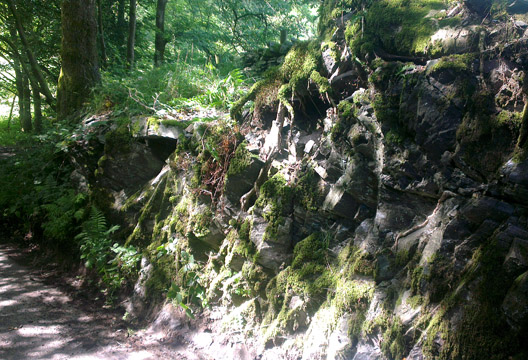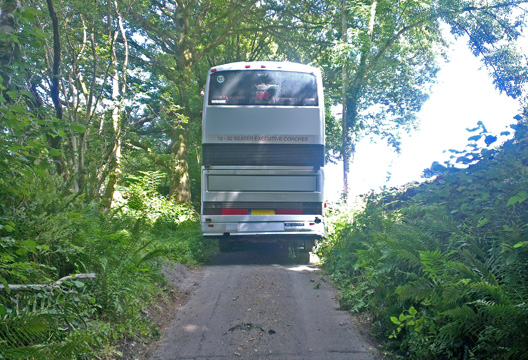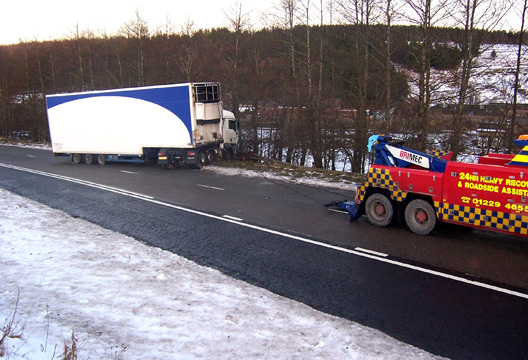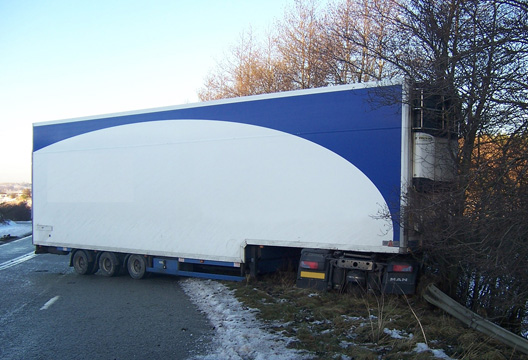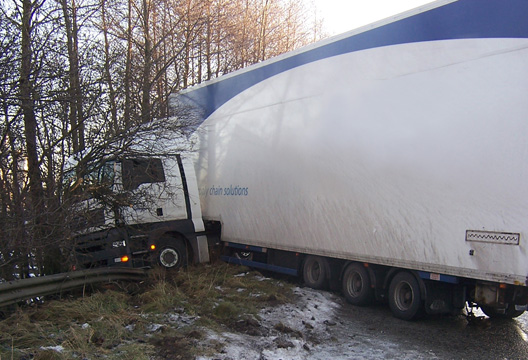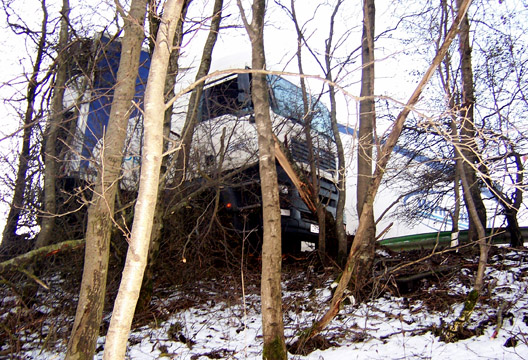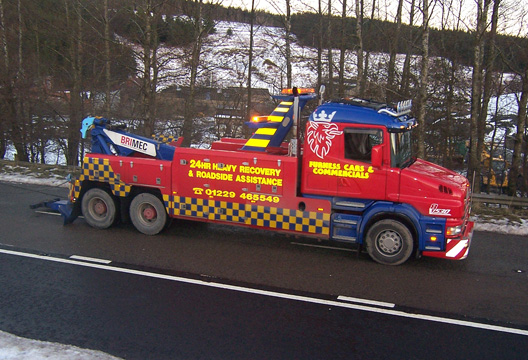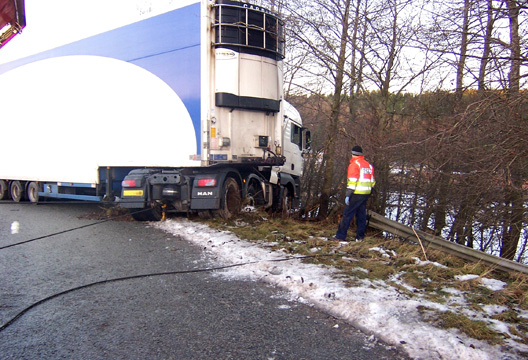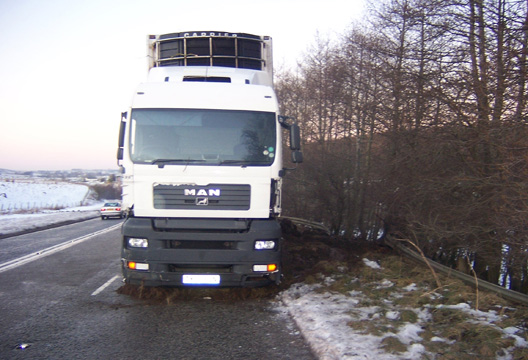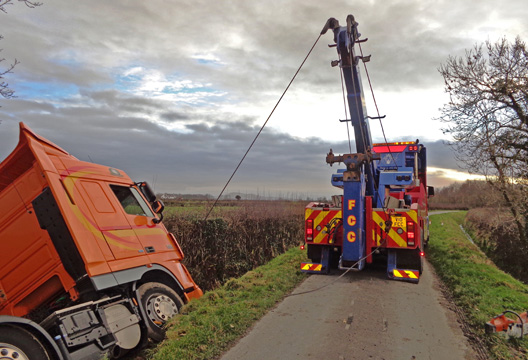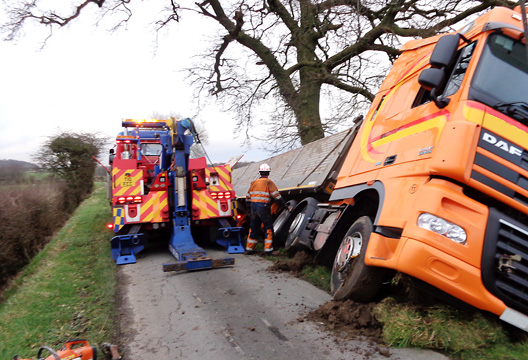Our Recovery Vehicles in action
Here are some recent case histories of recoveries we have undertaken.
Because every incident is different, the recovery vehicle we send to the location and the methods we use to assist and recover are also different.
Page 1
Recovery 1
We received a request from an insurance company to assist with the recovery of their policyholders caravan which had, due to a hitch fault, broken free from the vehicle towing it and left the road – ending up on marsh land on Walney Island.
On arrival at the scene we assessed the recovery, taking into consideration the soft ground on which the caravan was situated. We also noticed the road signs the caravan had narrowly missed when leaving the road: these could be an issue for us when bringing the caravan back on to the road. The jockey wheel, hitch and front stabilising legs had buried themselves into the soft ground. Other than this, there was minimal damage to the caravan.
We attached our winching equipment to the rear chassis of the caravan and gently winched the caravan backwards, freeing it from the soft ground and long grass, turning the caravan as it was being winched to reposition it for the return journey. With the caravan back on the roadside, we positioned the caravan ready for loading, removed all of our winching equipment and loaded the caravan on to the slidebed, securing it ready to be transported to a caravan specialist for repair.
As you will see from the images, the caravan arrived at the caravan specialist with minimal damage from the accident and without any further damage during the recovery process.
Recovery 2
Called by our good friends at Crouch Recovery of Leicestershire to assist one of their coach customers who had become victim to the Lake District’s narrow roads. Due to the vehicle’s location in a remote part of the Lake District we attended with our custom built 4×4 tractor winching unit, H82 TEO. Using our low-loader to transport the tractor as close to the scene as possible, but due to the size of our low-loader we still had some distance to travel once unloaded.
Attending this incident were Kevin Grieve and Gary Grieve, who travelled to the given location saying to one another the famous last words in vehicle recovery “It can’t be up here.” After travelling on for another mile we were stopped by some passersby who asked “Are you looking for a bus?” to which we replied “Yes”. To our disbelief were told “Carry straight on another mile”, which we did and again to our disbelief we came across the stranded coach.
The driver had already tried to correct his mistake and turn the coach around. However, due to the width of the road and the size of the coach, this was unsuccessful and the rear of the coach grounded out on the roadside. Using our 4×4 tractor we first winched the vehicle clear of the obstruction to the rear of the coach, positioning the coach back on to the road surface we then lined the coach up for getting it back to the main road. However, we had the task of getting the coach through twelve-foot rock faces situated on both sides of the road (as you will see from the images). In order to give us control and prevent any further damage we carefully winched the vehicle at low speed through the rock faces.
Once through the rock faces we disconnected our winching equipment and escorted the coach back to the main road, giving it a check-over to make sure it was roadworthy. As the coach and driver were on their way home, all what was left for us to do was to return to our low-loader, re-load the tractor and return to base.
Recovery 3
Called to assist our friends at Heysham Trucks, we attended this vehicle on the A6 heading away from Kendal towards Shap. The vehicle had been caught out by the road conditions and jack-knifed, crashing through the roadside crash barrier and trees. After arriving at the scene and assessing the recovery, we set up our commercial underlift, T10 FCC.
Using both winches attached to the rear axle of the trailer, we winched the trailer and unit backwards to start freeing it from the jack-knife position in the soft ground. We disconnected the winching equipment and moved to the front of the unit and trailer – reconnecting our winching equipment to the rear axle of the unit. We winched it further back, freeing the unit from the crash barrier in which it was entangled. Now the unit and trailer were not far from the road, but required one last pull! With one winch on the front axle and the second remaining on the rear to create a joint pull, we brought the full vehicle back to the road surface in the perfect position for loading.
After clearing the scene of debris and securing the unit and trailer ready for recovery, the vehicle was loaded and recovered back to the owners premises for repair.
Recovery 4
Unfortunately we only have the two images of this incident, but they are enough to see the severity of the recovery required. As you can see, the road on which the vehicle was travelling was very narrow and had drainage ditches both sides. The vehicle had only crept onto the roadside verge by a short distance, but due to the soft ground and gradient of the embankment down to the ditch, the verge gave way and the entire vehicle slipped sideways in to the drainage ditch.
Attending this incident was Kevin Grieve and Paul Grainger with our two commercial underlifts T10 FCC and V10 FCC. Using V10 FCC to the front with its top boom high to create a high winch pull and T10 FCC positioned to the rear, to stabilise the vehicle and trailer, it was winched clear and back to the road surface.


